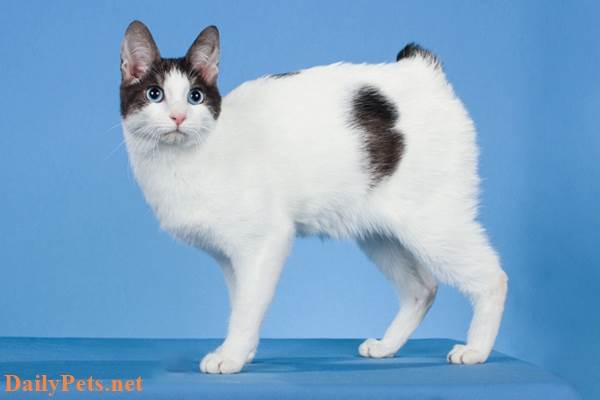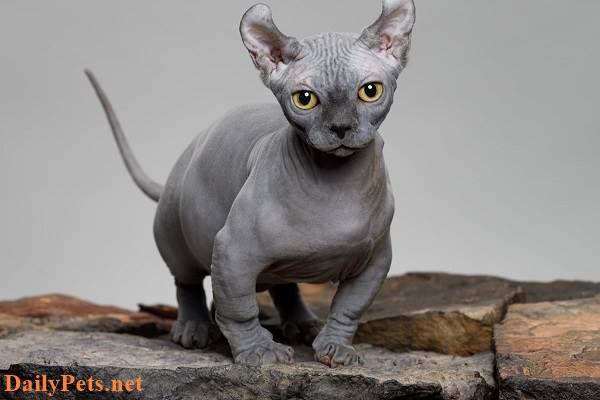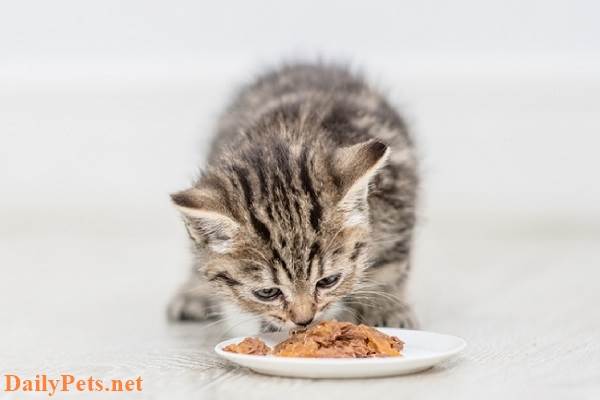So what is this cat’s origin, its characteristics, how to care, and how much is the price?
The History and Origin of the Japanese Bobtail Cat
The Japanese Bobtail cat is a Bobtail cat living in Japan; they have existed here for a long time. You can easily see pictures and paintings of this cat breed, which appeared more than 1,000 years ago.
The Japanese Bobtail Cat is a breed of cat native to Southeast Asia and Japan. They are known for their strange bobtails and often appear in Japanese culture. In folklore, Japan considers the Bobtail cat a symbol of goodness, promising a bright future.
Currently, there are no documents to confirm the origin of this cat. There are some theories that the ancestors of the Japanese Bobtail Cat appeared and migrated here 1,000 years ago.
According to some records, in 1600-1602, rodents became a threat to agriculture. The Japanese government has allowed the release of all cats to be raised and banned hunting and trading of cats across the country. This causes the number of feral cats in Japan to increase.
It was not until 1968 that the Japanese Bobtail was introduced to North America. This breed is recognized by the Cat Fancier’s Association (CFA) and is widely kept. In 1976, they were accepted to participate in the championships competition.
In 2011, in Europe and North America, there were facilities that allowed the breeding of Japanese Bobtails. However, this breed is still scarce in Japan, but the number is not as much as rumored.
Features Appearance of the Japanese Bobtail cat
The Japanese Bobtail cat impresses pet lovers with its medium-sized Appearance. Each adult weighs from 2.7kg to 4.5kg. Generally, male Bobtail cats are larger than females. At the same time, newborn Japanese Bobtail cats also have larger bodies than common cats.

Japanese Bobtail Cat.
This cat breed has an elongated body and long and slender legs. Well-developed muscles create a balanced body structure. Me and the cat’s head are in harmony with each other. In particular, the face of the Japanese Bobtail Cat is impressed by its high cheekbones and oval eyes. The cat’s ears are large, always erect, perpendicular to the head; the tip of the ear is pointed as if listening to the surrounding movement.
The Japanese Bobtail cat has a neck that is neither too long nor too short. The neck and body are well proportioned, the head has a small triangle shape, and the face is slim. Some Bobtail cats possessing white fur often have two-colored eyes.
The Japanese Bobtail Cat has a unique Bobtail, not to be confused with any other cat species. The tail is made up of one or more sharp corners, curved joints, and twists. This is the result of a genetic mutation; when a mother cat with a Bobtail, her offspring are born with a Bobtail.
The Japanese Bobtail cat has a variety of coat colors: Tricolor, white, black, or orange. All coat colors are acceptable, but tricolor Bobtails are far more popular. Besides, this cat has a short coat with medium length. The hair is always soft and extends towards the buttocks.
Personality Traits Japanese Bobtail Cat
The personality of the Japanese Bobtail cat is mainly hyperactive, intelligent, and easy to train. This cat breed is obedient to the owner; they like running and playing more than Western cats.
In particular, the Japanese Bobtail Cat has a rather sweet and soft sound. You will be mesmerized when your pet cat asks to eat or play with. When keeping this breed of cat in the house, you can teach them to do some simple games.
The adult Japanese Bobtail cat, is inherently active, has a cheerful personality when it comes to dancing, and adapts to the outside environment. This cat breed loves to be accompanied by its owner, even talking to the owner with a sweet, heart-melting cry. Some breeders joke that this is when they are “singing” with all different tones.
Besides, Japanese Bobtail cats were born to “roll out” on the catwalks, so they are curious, brave, and agile. Thanks to their loving and caring personality, they are loved by many families.
The Bobtail cat is also considered a representative of Japanese religious culture. The image of Maneki Neko cat sitting on two legs, one front paw raised as if beckoning. This is a familiar image to Japanese residents; they bring luck and money to the owner. Therefore, this cat breed is considered peaceful, lucky, and happy.
It can be said that the Japanese Bobtail cat is a very rare cat breed, the number of which has not been bred much. In addition to being bought as pets, they are also worshiped in Japanese religious beliefs.
Some common diseases in Japanese Bobtail cats
When raising a Japanese Bobtail cat, owners are also worried about their health status. Because similar to other ornamental cats, this breed also has some diseases. Mainly minor diseases related to the living environment and nutrition.
Japanese Bobtail cats are generally in good health, with an average lifespan of 15-18 years. Each litter of female cats can give birth to 4-5 kittens; newborn cats are larger than normal cats.
To prevent common diseases in Japanese Bobtail cats, owners need to pay close attention to care. Kittens must be checked for health at full term, vaccinated, and dewormed periodically.
How to care for and train a Japanese Bobtail Cat
Similar to other ornamental cats, the Japanese Bobtail cat needs to be cared for carefully by the owner. Specifically:
Daily nutrition
The Japanese Bobtail Cat should be fed a combination of soft and dry foods. For each meal, the owner needs to feed the pet cat a full range of food groups, including Fiber, protein, protein, calcium, and vitamins. Mainly food made from Vegetables, chicken, animal liver, pate, scad, salmon, …
For cats who like to eat dry nuts, you should choose foods manufactured by reputable brands. Buy nutritional seeds at a major store to make sure you’re buying the right product from a reputable source. Because cats have poor-quality seeds, it is easy to get kidney and digestive diseases.
Hair Care
The Japanese Bobtail needs to be brushed weekly to remove dead hair. This cat breed often gets tangled, especially since tail hair is quite hard, so you need to use a specialized comb to comb the hair growth direction.
The cat’s coat is also highly resistant to water, so the owner has little difficulty in bathing the pet cat. You should only bathe your cat once a week; in case cats are often exposed to sandy soil and dirty water, they need a cleaner bath.
Body hygiene
Owners should clean their teeth every week so that the Japanese Bobtail Cat does not have periodontal disease. The cat’s eyes should use a soft cloth to wipe off dust and ashes. Attention: Gently wipe to remove all secretions from the eyes to avoid the cat’s eye infection.
The cat’s ears should be checked and cleaned when seeing a layer of dirt clinging to the inside of the ear cavity. The owner needs to buy a specialized ear spray if the ear is too dirty. Use a cotton swab to wipe gently; avoid poking deeply, which can easily cause pain and ear infection.
At the same time, pet cats need to have their nails trimmed regularly every week. To prevent cats from scratching household items as well as protect your skin, avoid scratching when playing with pets.
In addition, the pet’s toilet area needs to be chosen as a cool and clean place. The litter box should be kept dry, and the cat’s waste should be cleaned regularly. As soon as you see your Japanese Bobtail Cat go to the toilet, you need to see if the cat feces have a strange smell or color. Cats with digestive problems need to be treated promptly so the stool is not diluted.
Do exercise
Japanese Bobtails can also become obese if kept in a small, sedentary space. Therefore, owners should let their pets exercise regularly. With indoor cats, you should buy toys specifically for pets.
When you have free time on weekends, take your cat for a walk, pay attention to using a leash, and avoid letting the cat run around. Cats can play with children or pets in the house, keeping the pet active and not sluggish.
How much does a Japanese Bobtail cat cost?
To find a Japanese Bobtail cat, you can go to some big cat farms and consult pet groups or forums to ask about this cat breed. A Japanese Bobtail cat can range from $500 to $1500.
One important thing to note before you decide to spend money to adopt a Japanese Bobtail cat is to find out the information and reputation of the seller. It is best to make an appointment and discuss specifically with them as well as check the cat’s condition directly so as not to be “unjustly lost money.





